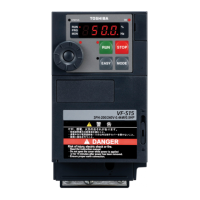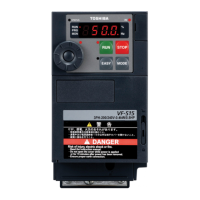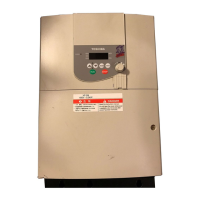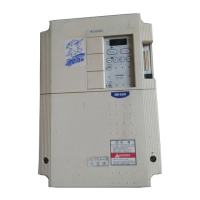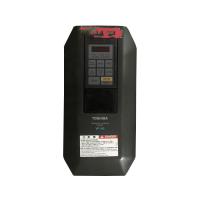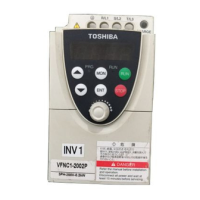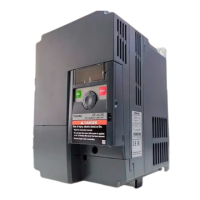E6581158
F-53
6
Title Function Adjustment range Default setting
H
Motor adjustment factor 0-200
Depends on
the capacity
VJT
Motor electronic thermal
protection level 1
10-100 (%) 100
Setting procedure Adjust the following parameters:
H: Select " " to set the motor constant independently using the H-H parameters.
H: Set the compensation gain for the slipping of the motor. A higher slip frequency reduces motor
slipping correspondingly. After setting H, set H to adjust in detail.
H: Adjust the primary resistive component of the motor. Decreases in torque due to a possible voltage
drop during low-speed operation can be suppressed by setting a large value in this parameter.
(Perform adjustments according to the actual operation.)
H: Set the rated current of the motor. For the rated current, see the motor's nameplate or test report.
H: Set the ratio of the no-load current of the motor to the rated current. Enter the value in % that is
obtained by dividing the no-load current specified in the motor's test report by the rated current.
H: Set the rated rotational speed of the motor. For the rated current, see the motor's nameplate or
test report.
H: Using this parameter along with H, adjust the speed of response to the frequency command.
H: Using this parameter along with H, adjust the speed of response to the frequency command.
* How to make adjustments according to the moment of inertia of the load
The moment of inertia of the load (including that of the motor shaft) was set at the factory on the
assumption that it would be three times as large as that of the motor shaft.
If this assumption does not hold, calculate the values to be entered in H418 and H419, using
the following equations.
H=
(a/3)×40
H=
(a/3)×20
Where a is the times by which the moment of inertia of the load is larger than that of the motor.
After the above adjustments, if necessary, make fine adjustments as described below.
• To increase the response speed: Increase the setting of H.
• To reduce the response speed: Decrease the setting of H.
• If overshooting or hunting occurs: Increase the setting of H.
• If reduction gears or the like squeak: Increase the setting of H.
• If an over-voltage trip occurs on completion of acceleration: Increase the setting of H.
When making the above adjustments, increase or decrease settings in steps of 10% or so while
checking how things change.
Note also that, depending on the settings of H and H, the frequency may exceed
the upper-limit frequency if the inverter is set so as to accelerate the load in the shortest
possible time.
H: Using this parameter along with H adjust characteristics in areas in which the frequency is
above the base frequency (areas where the field is weak).
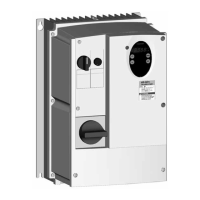
